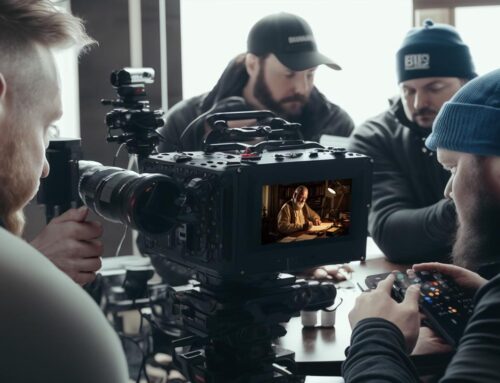In this rapidly changing world of digital marketing, user-generated content (UGC) has emerged as a powerful tool that can significantly amplify a brand’s reach and engagement. In particular, user-generated video content (UGVC) has the potential to redefine the way brands connect with their audiences, yet this potential remains largely untapped by many businesses. This article aims to demystify UGVC, offering a comprehensive understanding of its nature, benefits, challenges, and strategies for effective utilization in branding and marketing.
The digital revolution has given rise to various forms of UGC, from simple text-based reviews to high-quality videos. Among these, UGVC stands out due to its compelling nature and immersive appeal. Today, UGVC is not just confined to dedicated platforms like YouTube or Vimeo; it also thrives on social networking sites like Instagram, TikTok, and Facebook, transforming the way people consume and interact with content.
As we delve into the world of UGVC, readers will learn about the concept of UGVC, its rise, and its implications for brands. We will explore the benefits of UGVC to brands, backed by relevant statistics and real-life examples. The article will also discuss the challenges associated with UGVC, offering practical solutions and strategies to overcome them. Furthermore, we’ll analyze successful case studies of brands that have harnessed the power of UGVC for their growth and outreach.
By the end of this article, readers will have a thorough understanding of UGVC and its potential for brands. They will also gain insights into how they can leverage UGVC to create authentic connections with their audience, enhance brand visibility, and drive customer engagement and loyalty.
Table of Contents
- Understanding User-Generated Video Content
- The Rise of User-Generated Video Content
- Benefits of User-Generated Video Content to Brands
- Challenges in User-Generated Video Content and How to Overcome Them
- Successful Brand Case Studies Using User-Generated Video Content
- Final Thoughts
- Sources
Understanding User-Generated Video Content
User-generated video content (UGVC) has radically transformed the traditional content landscape. It’s not just about brands broadcasting their message anymore; it’s about a two-way conversation where consumers also become creators. Whether it’s an unboxing video on YouTube, a product review on Instagram, or a creative skit on TikTok, UGVC adds a layer of authenticity and personal touch to the brand’s image.
In this era of information overload, consumers are looking for content that is authentic, relatable, and engaging. UGVC fits this bill perfectly, as it is created by real people sharing their genuine experiences and opinions. As a result, UGVC is perceived as more trustworthy and persuasive than traditional branded content, helping brands forge a deeper connection with their audiences.
The Rise of User-Generated Video Content
The rise of UGVC can be attributed to several factors, including the increasing penetration of smartphones, high-speed internet access, and the proliferation of social media platforms. These platforms have made it easy for users to create, share, and consume video content.
According to the Cisco Annual Internet Report, video traffic will make up 82% of all internet traffic by 2022, underlining the growing importance of video content. Additionally, the Pew Research Center’s Social Media Fact Sheet reveals that as of 2021, roughly seven-in-ten Americans use social media, indicating a vast audience for UGVC.
Benefits of User-Generated Video Content to Brands
UGVC offers several significant benefits to brands. Not only does it boost engagement, but it also enhances brand loyalty and trust, strengthens SEO, and fosters a sense of community among consumers.
Boosts Engagement
UGVC is more engaging than traditional content. According to Stackla’s Consumer Content Report, consumers are 2.4 times more likely to view user-generated content as authentic compared to content created by brands. This perceived authenticity can significantly enhance audience engagement.
Enhances Brand Loyalty and Trust
UGC, particularly UGVC, can foster trust and enhance brand loyalty. Nielsen’s Global Trust in Advertising Report found that 92% of consumers trust organic, user-generated content more than they trust traditional advertising.
Strengthens SEO
UGVC can also bolster a brand’s SEO efforts. Search engines favor fresh and unique content, and UGVC provides a steady stream of such content. Furthermore, UGVC often includes organic keywords and phrases used by real people, which can improve search engine rankings.
Fosters a Sense of Community
By encouraging and sharing UGVC, brands can foster a sense of community among their customers. This not only enhances customer engagement but also promotes brand advocacy.
Challenges in User-Generated Video Content and How to Overcome Them
Despite its numerous benefits, brands need to navigate certain challenges associated with UGVC. These include ensuring content quality, managing potential risks to brand reputation, and maintaining consistency in brand messaging.
Ensuring Content Quality
The decentralized nature of UGVC means brands have less control over the quality of content associated with them. However, brands can overcome this by setting clear guidelines for UGC and by encouraging and rewarding high-quality submissions.
Managing Potential Risks to Brand Reputation
UGVC can sometimes pose risks to a brand’s reputation, especially if negative or inappropriate content is associated with the brand. Brands can manage this risk by closely monitoring UGVC and promptly addressing any problematic content.
Maintaining Consistency in Brand Messaging
With UGVC, there’s a risk of inconsistency in brand messaging. Brands can mitigate this by communicating their brand values and guidelines to their community and by curating UGVC to ensure it aligns with their brand image.
Successful Brand Case Studies Using User-Generated Video Content
There are several brands that have successfully harnessed the power of UGVC. Here are a few examples:
GoPro
GoPro encourages its users to share their adventures captured on its cameras. It regularly features user-generated videos on its social media channels and website, creating a sense of community among its customers.
Starbucks
Starbucks’ #RedCupContest is a great example of UGVC. Each year, customers are encouraged to share their creative snaps of the brand’s holiday-themed ‘red cups’, with the best entries winning a prize.
Airbnb
Airbnb’s ‘Live There’ campaign encouraged users to share videos of their unique travel experiences. This UGVC helped to reinforce Airbnb’s brand image as a provider of unique, local travel experiences.
In conclusion, UGVC presents a wealth of opportunities for brands willing to embrace it. It offers a unique blend of authenticity, engagement, and consumer trust that traditional forms of advertising struggle to match. However, to fully harness the benefits of UGVC, brands need to foster a community that encourages and rewards user content creation, maintain an ongoing dialogue with their audience, and be responsive to their feedback.
Final Thoughts
In the realm of digital marketing, user-generated video content represents a massive, largely untapped potential for brands. It offers a unique blend of authenticity, engagement, and consumer trust that traditional forms of advertising struggle to match. However, for brands to fully harness the benefits of UGVC, they must overcome associated challenges such as ensuring content quality and managing potential risks to brand reputation.
The most important takeaway from this article is the understanding that integrating UGVC into a brand’s marketing strategy requires a well-thought-out approach. It’s about fostering a community that encourages and rewards user content creation, maintaining an ongoing dialogue with the audience, and being responsive to their feedback. Done right, UGVC can not only amplify a brand’s reach but also build stronger, more personal connections with its audience, ultimately driving higher customer loyalty and brand advocacy.










